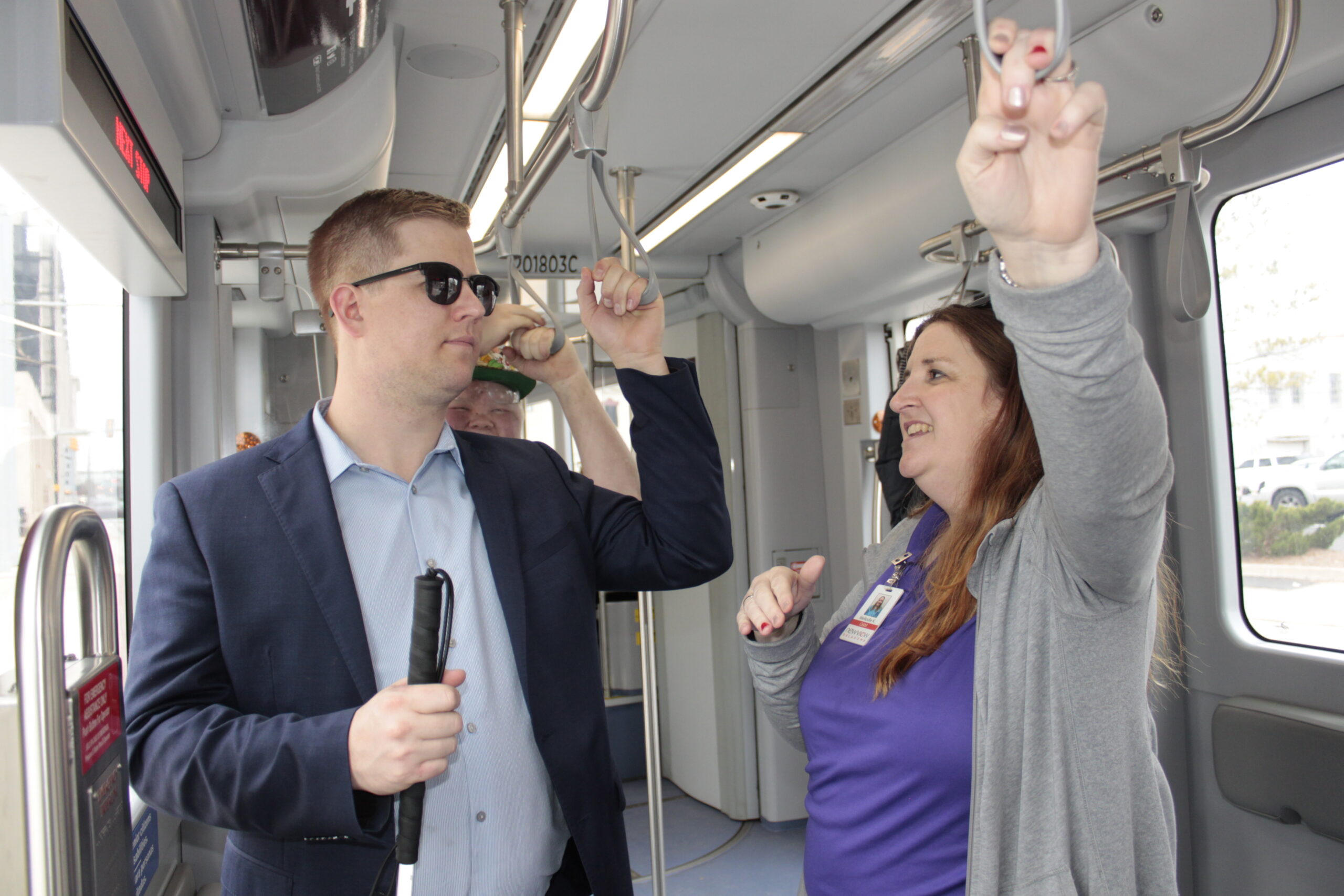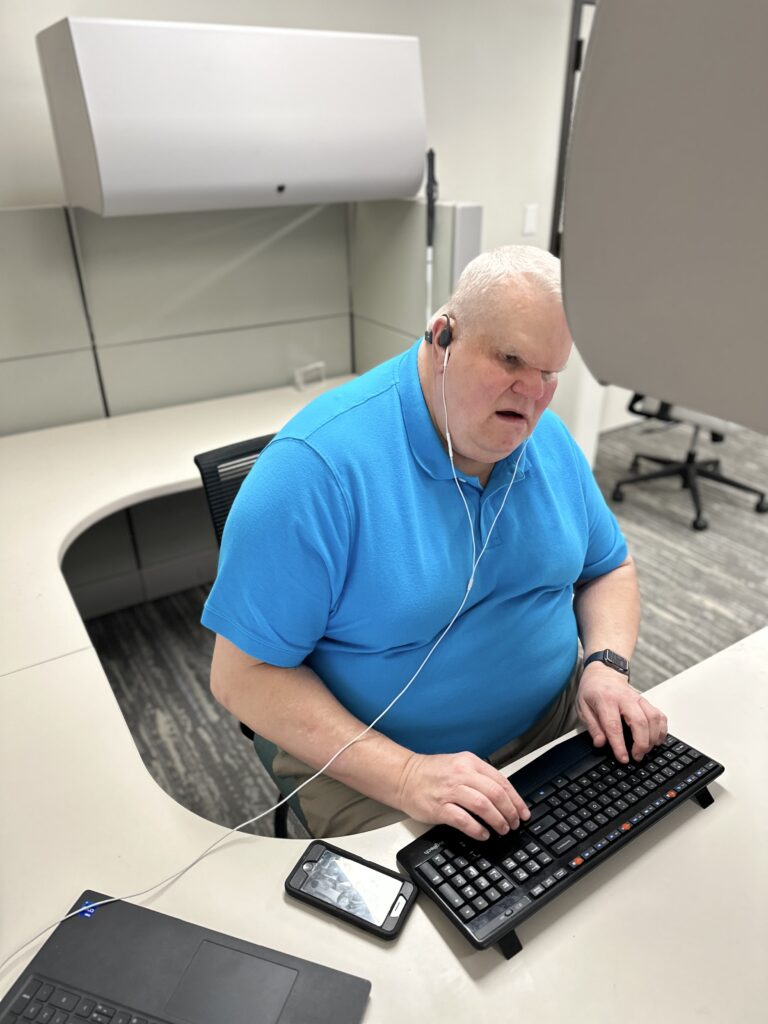Keepin’ it Rail
On December 14, 2018, Oklahoma City opened the highly anticipated streetcars to the public. Advocates for the streetcars have long envisioned a more accessible public transportation system for Oklahoma City, and this is a large step in the right direction. The streetcars are free until Feb. 1, but fares will be $1 per trip or $3 for a day pass.
I think it’s a little ironic that the mass majority of passengers will be driving/Ubering to the downtown area in order to ride the streetcars, but the 4.9-mile loop covers the central business district and midtown. And there is a 2-mile Bricktown loop that will run Friday and Saturday nights. Both loops will run during the day on Sundays.
My review of the streetcar addresses the blind community specifically. I have an eye disease called Retinitis Pigmentosa (RP). RP is progressive and by age 22 I had to give up my car keys, along with my independence. If you live in Oklahoma and own a car, odds are you’ve never rode the city bus. And odds are, if you do ride the city bus you learned using your sight. Learning this task without vision can be overwhelming, embarrassing and even dangerous. When you lose your sight, training and familiarity is critical. Last month, I received streetcar training from one of NewView’s orientation and mobility specialists and here’s what I came away with.
Boarding the streetcar
The pickup spots offer truncated domes, the bumpy pads on sidewalks often referred to as tactile paving. The tactile paving runs the length of the pickup ledge, cautioning people to avoid the near two-foot drop from the platform. I highly suggest not wearing headphones as the streetcars themselves are surprisingly quiet and use bells and horns to alert you of their presence once stopped. If you must, checkout bone conducting headphones.
My training was during the free period, so the coin and card machines that are used at each stop to purchase fares were covered, but it is my understanding they are supposed to be audible. You can also bypass the manual pay machine and use the Token Transit phone app which is what I use to get to work every morning with Embark Plus.
The first time I used the app, it was a little confusing, but I was able to make sense of it after the first try. You can purchase a ticket on the app whenever you want and it will load automatically to the home page. If you click the ticket it will ask for you to confirm that you want to use it. The kicker is once you confirm, the ticket is valid for 15 minutes. When I use the app, I confirm the ticket as the bus, or in this case the streetcar, is pulling up. The app will tell you that an internet connection is needed to purchase/confirm your ticket. They are talking about cellular data, not Wi-Fi. I also purchased a ticket on the app with voice over on my iPhone without issue.
I have been told there will be a fare attendant on the streetcar to check tickets of passengers. On an EMBARK bus, you show the driver your paper or electronic ticket. I’m interested to see how that works out because the streetcars will have three doors for riders to enter on. When boarding the streetcar, you will notice that you do not have to step up to get in or out. The streetcar lines up with the ledge allowing you to “walk n roll” right in.
Inside the streetcar
First things first, make sure you secure your bearings by holding onto the loop above your head or sitting in a chair before the streetcar moves forward. The middle of the streetcar is designated for elderly and special needs passengers, so if you’re vision-impaired, this might be the best place to go. The streetcars are a little herkie jerky as they depart; two elderly passengers told me they had fallen to the ground the first time riding the streetcar. I did notice that the platform is textured, allowing traction for shoes and wheel chairs.
That traction might come in handy for those passengers standing on the moving floors. That’s right, our 66-foot, three-segment streetcars have moving floors between each segment that swivel during turns. The magic floors allow the streetcar to make accurate turns within the flow of traffic rather than having to make wide-swinging turns. The only safety concern would be if you have a walker, cane, crutches, wheelchair, etc. Just use the aforementioned area in the middle of the bus, and you will not fall victim to the magic floors.
Exiting the streetcar
Volume might be an issue for a blind person. The voice commands that inform passengers of the upcoming stops is not easy to hear. At one point during my ride, the streetcar was half full, and the automated voice was hard to hear. When your stop approaches, be ready so that you can push the stop buttons located throughout the streetcar. To my understanding, if nobody is waiting at your desired stop, the streetcar will blow by it, so you must stay aware to when your stop is approaching. The doors automatically open and close in about 15 seconds. If it’s crowded, I assume the streetcar operator will extend the time.
If you are blind or have low vision and have hopes that the streetcars will change your life, don’t. If you’re hoping they’re accessible to the blind community, the answer is yes. There will be improvements needed, like everything that’s new, but they have started off on the right foot. There are still a few unknowns that I hope to resolve over time. I plan on scheduling another training session in a few weeks, which will answer the ticket machine functionality, fare attendant process, and route machine functionality.






